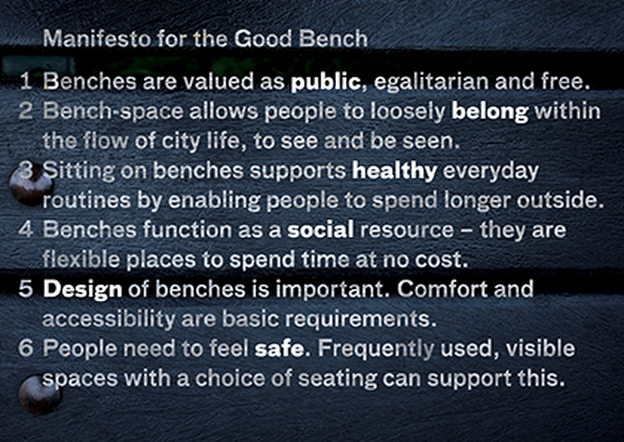TH E BENCH PROJECT
MANIFESTO
Manifesto for the Good Bench
|
Benches are valued as public, egalitarian and free.
Bench-space allows people to loosely belong within the flow of city life, to see and be seen. Solitude and conversation are equally acceptable. Sitting on benches supports healthy everyday routines by enabling people to spend longer outside. These opportunities to rest can be restorative for mental health and support local walking when personal mobility is limited. Benches function as a social resource - they are flexible places to spend time at no cost. This is appreciated by many, and especially vital for people who are largely marginalised from other collective environments such as work, cafes, educational or leisure facilities. They are contrasted positively with crowded, lonely or boring home situations. Design of benches and of sittable public space is important. Comfort and accessibility are basic requirements. Clustering of benches and co-location with a range of facilities provides interest and gives legitimacy to hanging out. The ability to gather in larger groups is valued by many. People need to feel safe. Frequently used, visible spaces with a choice of where to sit can support this. A mix of short and long stay bench users supports informal safety in numbers. Quality of materials, attractive planting, and cleanliness of public space seems to increase individual tolerance for the proximity of strangers and diverse ways of enjoying public space. |
Making Benches Better: Points for Action
|
Copyright © 2015 The Bench Project · co-production project partners. All rights reserved worldwide.

